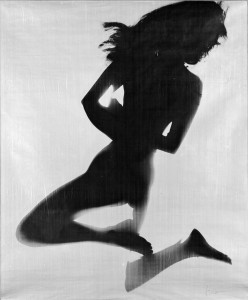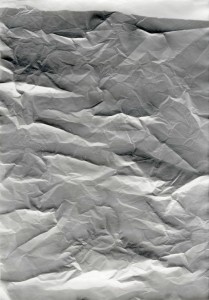What is a photogram? Well, it’s the image resulting from placing an object on light-sensitive paper for a certain amount of time. It’s considered to be part of a movement encompassing all art of imaging and camera-less photography. “Having been educated as a mural painter I later turned my interest towards photography. My acquaintance with Man Ray’s and Moholy-Nagy’s photograms raised my interest in this particular technique which I had practiced already as a youth but which became my prime artistic tool as of 1960” he said when asked about his source of inspiration.
At the Gallery will be exhibited the “Nudogramms” (early 1960s), “Tellerbilders” (1968), “Faltbilders” (1964), and the “Knitterbilders”, a very nice selection of use of the technique on individuals and/or objects. When asked why he chose photograms instead of classical photography, he replied: “It was important to me, that other than photographs which reproduce a view or ‘reflected light’, I use a light source instead to make a light design on a blank sheet of photographic paper. This light design or light painting can be created with or without subjects. When a nude poses on paper, the light draws her silhouette, but one with many gray tonalities that echo, in a non-naturalistic way, the volumes of her body. The same applies to a composition of plates. I can also simply fold the light sensitive paper and expose it to light. The result is a non-objective photogram.”
The exhibition is one that opens the mind to the endless possibilities residing in that form of art. The variations in colour of those monochromatic prints, gives the audience a definite notion of space and time, embellishing curves, lines and shapes, to become one that is mind puzzling to say the least. The resulting effect is breathtaking and so genuinly refreshing, thus making this exhibition a must see if you are in London!



